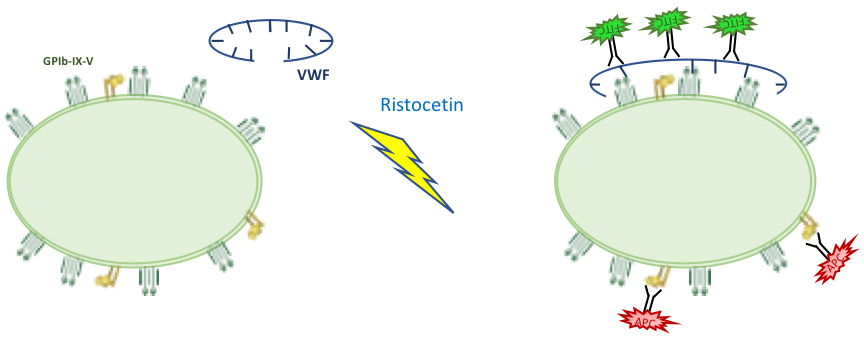VWF function and activity

ELISA to measure active VWF
Synapse Research Institute has developed has developed an ELISA to measure the active variant of VWF in plasma. We found that active VWF levels were increased in patients with chronic kidney disease and patients with end stage renal disease (undergoing thrice weekly hemodialysis), to an extent that is associated with disease severity (in terms of need for dialysis).
Van der Vorm LN, Visser R, Huskens D, Veninga A, Remijn JA, Hemker HC, Rensma PL, van Horssen R, de Laat B. Active von Willebrand Factor levels in kidney disease are associated with disease severity and type of dialysis. Submitted.
Whole blood von Willebrand Factor Function test
Synapse Research Institute developed a flow cytometry-based whole blood von Willebrand Factor (vWF) function test to distinguish von Willebrand Disease (VWD) patients with healthy subjects. This is a single-step assay that requires only minimal amounts of whole blood to quantify ristocetin-induced binding of vWF to GPIbα on platelets. VWD type 1, 2A, 2M, 2N and 3 are characterized by a reduced binding of vWF in response to a high concentration of ristocetin while VWD 2B is characterized by an increased binding of vWF in response to a low ristocetin concentration.
Baaij M, Schutgens REG, Britta AP, Laros-Van Gorkom B, van Heerde WL, Leung W, Sanders YV, Leebeek FWG, de Groot PG, Urbanus RT, Roest M. A Single-step whole blood micro assay for the rapid detection of Von Willebrand Disease, submitted.


